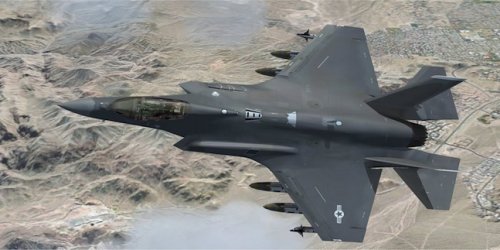Im probably stating something that has already been stated before, in which my apologies in advance

But as people have already alluded, part of the underlying problem seems to be the inherent need/want for the basic F-35 (in what ever variant F-35A,B,C) to do everything within the same design 24/7 - i.e precision strike, fighter, and my all time favourite (

) CAS, all on day one!
This inherently has not just the complexity issues of the F-35 period! It has also greatly attributed to its mass and debilitating overweightness = 'PPP'
So could Lockheed Martin and the Pentagon not consider some sort of quick-change modular arrangement, by which the three models of the F-35 series don't have to carry all the avionics/sensors and systems for all these roles of precision strike/fighter/CAS all at once?
I mean couldn't the given systems/sensors/avionics attributed to the perceived mission/threat not be installed, the non accentual ones taken out, so as to perform its assigned mission??
Would this not negate problems....issues??
I know its not perfect, but then again nor is the supposed 'super star', super fighter F-35 all that it was cracked up to be!

Wouldn't this negate the notion of having to start all over again..spending..wasting billions of $$$??
How about reassessing the realistic threat and mission profiles of the F-35 in today's threat environment, as opposed to the legacy Cold War scenario that the JSF was designed to fight??
Also, Im no aeronautical engineer, but the day I first saw the wing-profiles of the F-35A & B', which seems an eternity ago, I instantly thought they're too dam small in area!!

Im also wondering if the issues with JSF/F-35 are not partly to do with the 'three big' American aviation industry has become - Boeing, Lockheed Martin and Northrop Grumman! (yeah I know McDonnell Douglas was around at the time and submitted a design to JSF comp). I can't help wonder how and if the likes of Republic, North American Aviation, Lockheed, Boeing, McDonnell Douglas, Grumman, LTV might have devised alternative solutions to the costly problem that the JSF/F-35 has become. Being cleaver all absorbing and collusive corporations, I think it has much truth and merit to the acquisitions that Lockheed Martin and its F-35 is too big to fail :-[
Thirdly to my hypothesis is that the U.S Army and USMC should take their ground-based air defence much more serious than its done since the end of WWII, instead of predominantly putting so much faith in air-based fighters/interceptors winning and maintaining 100% air superiority/supremacy over the battlefield. Lets face it hand-held Stingers MANPADS, AN/TWQ-1 Avenger (what Stinger's and a 12.7mm MG :

), obsolete M167 Vulcan Air Defense System (VADS)'s, LAV-AD's (which has stupidly been removed from service)....oh and of course the handful of Patriot SAM's isn't taking air defence of your ground troop serious in this day and age, let alone during the Cold War!
P.S. I seen much about people saying the USMC no longer needs VSTOL/V/STOL capable aircraft! On what grounds do they substantiate this claim?

Regards
Pioneer

